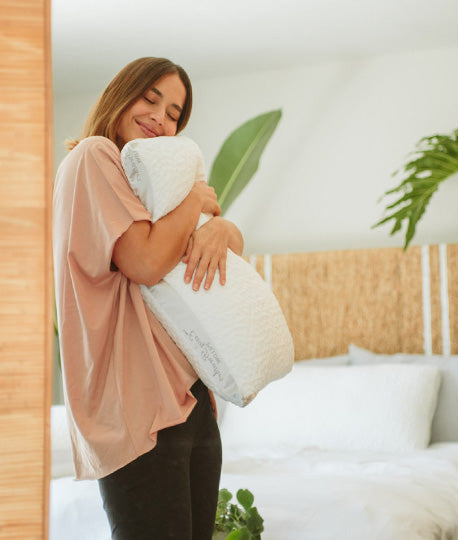Do I Really Need A Mattress Protector?

The answer depends on why you want mattress protection. In their most basic function, mattress protectors put barriers between your body and the mattress. Putting a mattress protector on your mattress is like putting on an undershirt to keep sweat stains from ruining that expensive outfit.
That said, putting a mattress protector on something you spend a third of your life laying on makes sense. For the record, people spend about 26 years sleeping and about seven years trying to get to sleep. A decent mattress can be costly and should last around eight years, give or take a few.
If the average sleeper needs four to five mattresses in their lifetime, you might want to do everything you can to go beyond eight years and protect your sleep investment. Then again, with so many choices between styles, sizes, and price points, your mattress may not even need protection.
Do You Need Protection?
We spend thousands of days of our lives lying down and sleeping. So, a better question is: do I need mattress protection while I sleep? Some people have sensitive allergies that get worse at night. Something as simple as a hypoallergenic mattress pad and protector can drastically reduce nighttime allergy symptoms.
Mattress protectors have many uses, many of which protect mattresses from people and what we do on them. However, some people need the extra layer between their skin and the mattress, particularly if it hasn't been moved in several years.
What's in Your Mattress?
Many of today's mattresses are made from memory foam you simply take out of a box, unroll, then place on a raised bed frame. The raised bed frame is a human invention because it gets people off the floor or ground, where all the critters live. A memory foam mattress is solid and dense, making it impossible for anything to survive inside the mattress.
In contrast, traditional mattresses have inner coils where plenty of space inside the mattress helps the coils adjust to body position. People should be aware of the dead space inside the traditional mattress. Over time, traditional mattresses collect dust and other things like dust mites.
Dust Mites, Dead Skin Cells, and Norovirus
Dust mites are microscopic bugs that eat our dead skin cells. Wherever there are people, there are dust mites. They love inner coil mattresses because we shed skin cells even as we sleep. It's not as common as you think, but some people are allergic to dust mites. Treated mattress protection keeps dust mites away from our skin.
Mattress protectors help stop the spread of viruses like norovirus, a serious stomach flu. Studies have shown that norovirus can live up to three to four weeks outside a host and inside a mattress or other bedding.
Better Safe than Sorry
Mattress protection provides protection for the mattress and protection from the mattress. You may not need or want the protection. However, it's better to have it and not need it than to need it and not have it. As an added bonus, today's mattress protectors come in various uses and styles, some of which are medical.




